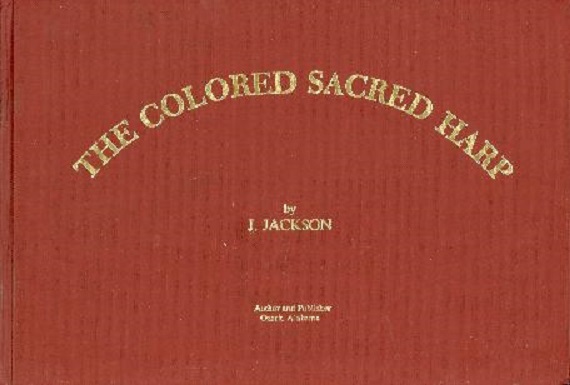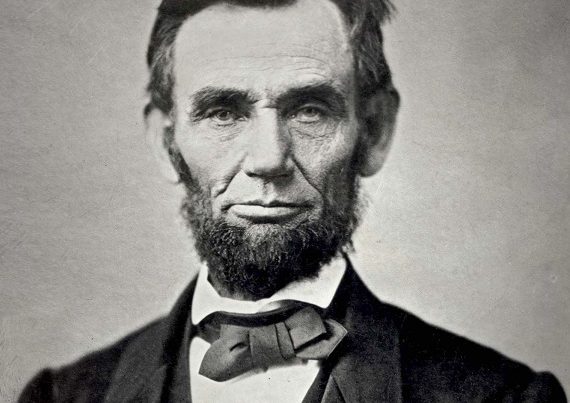
I have written here before about the history and mechanics of Sacred Harp singing, shape-notes, and Singing Schools. James Kibler has delivered some truly excellent talks about Singing Billy Walker and the origins of Amazing Grace as an original tune called New Britain in Southern Harmony and Musical Companion, and I strongly urge you to listen to his presentations. Listen to them again if you’ve already heard them, because he suggests, and I wholeheartedly agree, that Amazing Grace is the greatest and most defining song ever produced by an American – and a staunch rebel Southerner at that.
William Walker’s Southern Harmony (1835) and his brother-in-law B. F. White’s The Sacred Harp (1844) were published within 10 years of each other, and together they were the musical spine and marrow of generations of Southern music and Southern musical styles. Sacred Harp and shape-note singing continues strongly to this day throughout the South, and there are numerous conventions and camps held annually to teach and celebrate the power of the music. In fact, the magic has even invaded the North, and today there are Southern music teachers who find themselves hot commodities in New England and the Midwest as shape-note teachers. Sacred Harp singing is also an international phenomenon, as conventions and concerts regularly appear in Ireland and Wales. One thing that all of these events have always had (and continue to have) in common are the two books by Walker and White – Southern Harmony and The Sacred Harp. They have been reprinted, revised, and updated, but they remain the ultimate authority on all shape-note music instruction and singing.
With one very notable exception – The Colored Sacred Harp (1934) by Judge Jackson of Ozark, Alabama.
Judge Jackson was born in Montgomery, Alabama in 1883 into a family of sharecroppers, and moved to Ozark in Dale County in his late teens, where he was Baptized, got married, and lived the rest of his life as a farmer and preacher. He was mesmerized by and addicted to the sound of the Sacred Harp music that he heard throughout southeast Alabama, where he learned to read and write shape-notes from fellow workers and worshippers. African American Sacred Harp conventions had been circulating in the South since the 1870’s, and Jackson was no stranger to them. At some point, he began adapting existing tunes to his own original lyrics, and many of those in his congregation preferred his songs over the official ones found in the The Sacred Harp and in Southern Harmony. He essentially became a modern-day black version of Singing Billy Walker. As the popularity of his music increased beyond the walls of his own church and out into the black communities of Lower Alabama (they actually call it L.A. down there), he began composing completely original songs (lyrics and melody) in the shape-note style.
Judge Jackson’s popularity grew in the 1920’s to the point where he was in high demand to run singing schools of his own throughout Alabama and eventually the entire Southeast. His singing school technique involved following the basic principles and constructs as outlined in B.F. White’s Sacred Harp songbook, but he quickly swerved his lessons to include his own original and adapted Sacred Harp music. None of his songs were published at first. They were simply sketched out on paper and hand-copied, and memorized by the students in the singing schools and the members of the congregations. Since Jackson’s songs were incredibly good, it was not hard at all for his followers to memorize all of them. They would perform traditional songs from The Sacred Harp using the book, and also perform some of his original songs from memory – and usually by demanded request.
Judge Jackson wrote songs with an insight into African American spirituality that reached directly into the soul of his followers. One of his most popular songs, My Mother’s Gone, has a tremendous combination of raw emotional pain and gentle soothing faith that is almost impossible to achieve with sophisticated song-writing techniques. He wrote these lyrics in 1904, and added the tune in 1927.
I have a mother way in glory,
One by one we’ll gather home.
Gathering, gathering,
One by one we’ll gather home.
Each verse is repeated with a different family member added to the lyrics, making the song adaptable to everyone, and the “Gathering, gathering” chorus is repeated between each verse. Eventually, the song concludes with this final verse:
When Christ will say, “Well done,” my brother,
One by one we’ll gather home.
It’s such a simple little song. The lyrics are touching and emotional, but when they are combined with Jackson’s energetic melody, it becomes electrifying.
Judge Jackson tried to get his original and adapted songs included in the official Cooper revisions of The Sacred Harp songbook, but was rejected. Finally, in 1934, he decided to do it himself, and he published his own shape-note songbook called The Colored Sacred Harp. It contained 77 songs, consisting of original tunes by Judge Jackson and many others in neighboring churches, as well as some traditional Sacred Harp songs that he revised and adapted. It was a community effort in both composition and financing, as the publication of The Colored Sacred Harp was financed out-of-pocket and through charitable donations. He sold the book door to door and at Sacred Harp conventions and singing school revivals, and unfortunately, Judge Jackson died in 1958 with many copies of the original 1000 still unsold.
In the late 1930’s, an African American composer and educator from Tennessee named John Wesley Work travelled through southern Alabama (also known as the Wiregrass) and heard music from The Colored Sacred Harp for the first time. He published several scholarly articles about Southern black music and folk songs, and brought Judge Jackson to the attention of musicians and composers in a much more broad and cosmopolitan audience. In 1968, two notable New York musicologists named William Tallmadge and Milton Roguvin retraced Work’s steps, and encountered something amazing. They discovered that Judge Jackson’s son Japeth created a musical group known as The Wiregrass Sacred Harp Singers, who performed selections from The Colored Sacred Harp as well as traditional gospel and hymns. Their music and performance style was documented in Tallmadge’s Baptist Hymnody Collection, and a new generation of musicians and fans were introduced to The Colored Sacred Harp.
The Wiregrass Sacred Harp Singers were absolutely electric. They infused infectious rhythm and energy into their performances, while allowing the singers to explore and improvise the melodies. They followed the basic framework of The Colored Sacred Harp, but frequently and famously created their own arrangements on the spot, like this and this.
As you might have noticed, most of the performers in the videos were quite old at the time, and most of the African American Sacred Harp congregations have sadly almost completely vanished by now. Although the tradition had been easily passed on from one generation to the next for a hundred years, the late-20th century presented a crisis of relevance in Southern black communities, and The Colored Sacred Harp wasn’t cool or hip enough for younger audiences.
Finally, at the end of the 20th century, Judge Jackson received his official Sacred Harp stamp of approval for his life’s work. At that time, the Cooper Revisions of The Sacred Harp songbook began including selections from The Colored Sacred Harp, including Jackson’s best song, My Mother’s Gone, which is officially now known as song number 519 in the Blue Book.






